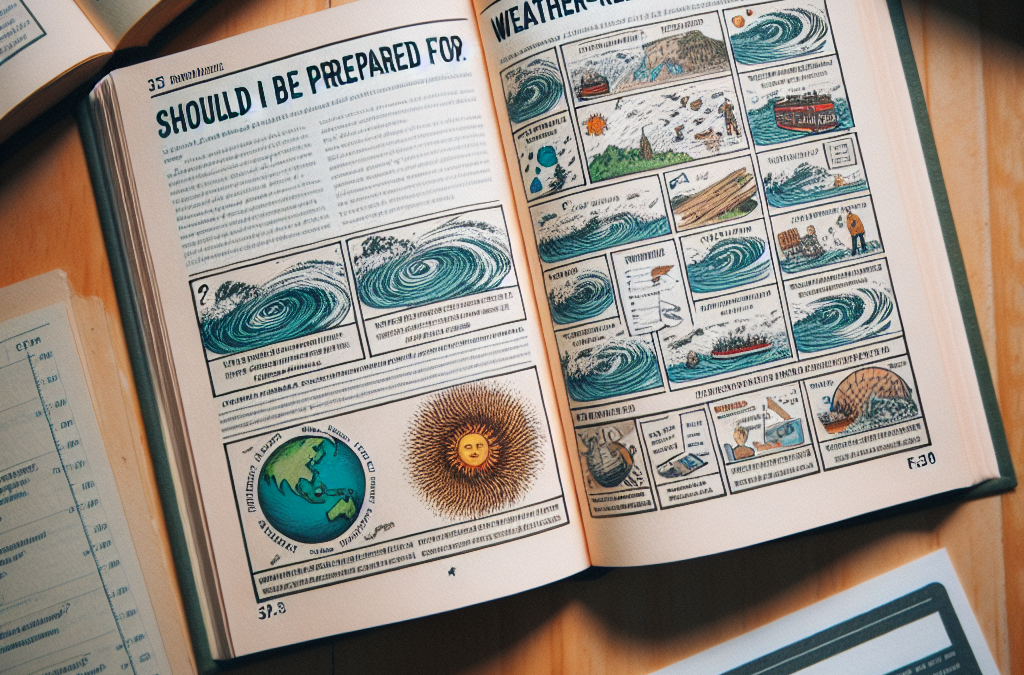Understanding the Risks of Weather-related Disasters
Types of Weather Disasters
First off, let’s talk about what we’re dealing with here. Weather-related disasters can come in many forms. From hurricanes and tornadoes to floods and blizzards, each carries its own risks. Living in a place prone to one or more of these can be quite an eye-opener. Rusty old me used to think, “It won’t happen to me,” until it did!
Understanding the types of weather disasters that can affect your area is crucial. This knowledge shapes not just your preparations but also your mindset. For example, if you live in a hurricane zone, you need to stock up differently than if you were in a place known for heavy snow. Beach towels don’t help when you’re trying to dig your car out of three feet of snow!
Equipping ourselves with this info prepares us better. I remember scanning through government websites and local news—sometimes, it’s about what you can find within your community. Forecasts and alerts can become your best friends if you know how to interpret them!
Creating an Emergency Kit
What to Include in Your Kit
Now, let’s get practical and discuss an emergency kit. You want this puppy ready to go in case of a disaster. So what do you toss in there? I like to think about the essentials—water, non-perishable snacks, a flashlight, and a first-aid kit. These little things can make a massive difference when the chips are down.
Don’t forget personal documents—insurance info, IDs, etc. I learned the hard way about keeping copies of important papers. You just never know when you might need them, and trust me, scrambling around to find them post-disaster isn’t the time to be searching!
And for those of you with pets, don’t leave them out of the mix! Fido needs food and a cozy blanket to curl up with too. Preparing for the whole family helps ease anxiety, and let’s face it, pets can get anxious just like us when the winds start howling!
Thank you for reading this post, don't forget to subscribe NOW for FREE!
Staying Informed
Weather Alerts and Updates
This part might sound boring, but staying informed is KEY. I can’t stress this enough! You need to sign up for local weather alerts. Honestly, I have my phone buzzing whenever there’s severe weather in my area, and it’s saved my skin more than once—literally!
Watching local news or following your area’s meteorologist on social media can also be a game-changer. They provide real-time updates that national platforms might miss. Make it a routine to check the forecasts for the week ahead—you’ll be the friend who knows what’s up!
And don’t shy away from using apps! Weather apps are super handy for tracking storms and alerts on the go. I make it a point to keep mine updated and check them regularly. A little vigilance goes a long way when nature has other plans!
Planning Your Evacuation Routes
Knowing When to Evacuate
If things go south, knowing when to evacuate can be a lifesaver. The thing is, sometimes it can be a race against time! Keeping an ear to the ground (or, you know, your weather app) when storms are brewing helps you make that decision. I often ask myself, “Is it worth it?”
When disaster strikes, confusion reigns! Planning your escape strategy beforehand relieves some of that panic. Map out the routes, check local guidelines, and have a plan B in mind. You’d be surprised by how many people just assume they’ll figure it out on the fly. Trust me; that extra prep will save you from some serious headaches later!
Also, coordinate with your family. We have a little group chat where everyone knows the exit routes and meeting points in case we’re separated. Communication is key in these scenarios, and it’s better to be safe than sorry!
Recovering After a Disaster
Assessing Damage and Resources
Okay, so the storm’s passed. Now what? Recovery can be a hell of a process. First things first: make sure you and your family are safe. Check for any immediate hazards before you go poking around. I always take my time and gather my thoughts before diving back in—the last thing you want is to get injured when you’re already stressed!
After ensuring safety, assessing the damage comes next. It’s crucial to document everything—photos, videos, lists of what was lost. This will help your insurance claims later. I’ve been through the wringer with claims, and trust me, keeping organized makes a world of difference!
Lastly, don’t hesitate to tap into community resources! Local organizations often step up to provide aid, whether it’s food, shelter, or emotional support. I remember attending a local community meeting post-disaster; seeing everyone rally together is what healed not just our homes, but our spirits too!
FAQ
1. How often should I check my emergency kit?
It’s best to check your emergency kit every six months. Make sure items like food, water, and batteries are fresh or replace them as needed. Keeping it up-to-date is crucial!
2. What items are often overlooked in emergency kits?
People often forget personal documents, prescription medications, and pet supplies. Don’t let these slip through the cracks—make a comprehensive list!
3. How can I stay informed about severe weather?
Sign up for local weather alerts on your phone, watch local news, and use weather apps. Staying proactive will keep you informed of any changes in your area.
4. What should I do immediately after a disaster?
Take immediate stock of your surroundings for safety, document any damages, and check in with family. Always prioritize safety before assessing the wreckage.
5. Is it better to evacuate or stay during a storm?
It depends on the severity of the storm and the advice of local authorities. If they issue an evacuation order, it’s generally best to heed that warning and leave!






